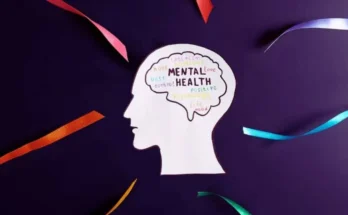Back pain, a prevalent global health issue, affects millions of Americans, with the Health Policy Institute stating that around 16 million U.S. adults experience chronic back pain, lasting over three months.
Back pain significantly impacts an adult’s quality of life, limiting mobility, affecting emotional and mental health, leading to pain medication dependency, and ultimately reducing overall well-being.
Spine expert Skulpan Asavasopon emphasizes the need to understand the underlying causes of persistent back pain, stating that the real question is why the pain persists, and diagnosing the root understanding the origins and mechanics of pain is essential to avoiding recurrence.
Asavasopon emphasizes the significance of good spine health and provides practical strategies to alleviate persistent back pain and prevent its recurrence.
The significance of spinal health
Asavasopon identifies three main reasons why spine health is crucial, given that many individuals may have back discomfort at some point in their lives:
- Economic Impact: Back pain has a major financial impact on both individuals and society as a whole since it causes high healthcare expenses, missed workdays, and incapacity.
- Silent Suffering: Many people suffer from recurrent, chronic low back pain, which is a major contributor to workers’ compensation and disability claims. This results in pain and damages cognitive function, which impacts performance and lucidity in general.
- Pain That Can Be Prevented: Back pain doesn’t have to last a lifetime. It can be kept from becoming chronic by identifying and treating the underlying causes.
What constitutes a healthy spine?
The most important factor is how well the spine functions in relation to its natural age, which is inevitable for all spines. Normal movements are supported by a healthy spine, which also ages naturally without experiencing unusual wear or degradation and can adjust to daily activities without experiencing severe pain. A 90-year-old’s spine, for instance, may have degenerative abnormalities on X-rays, but as long as it works normally for its age, it is still regarded as healthy. The spine of a 20-year-old, on the other hand, is obviously unhealthy if it exhibits comparable deterioration.
According to Asavasopon, having a healthy spine involves more than simply having the ideal structure; it also involves having the right mindset. Suffering can be greatly decreased by accepting aging as a natural part of life. According to Asavasopon, a 90-year-old who accepts the natural aging of their spine has less pain than one who views this as a concern.
Because it reframes the conversation surrounding spine health and emphasizes that anatomical alterations do not always translate into dysfunction, this mentality shift is crucial. Positivity has a significant influence on how spine health is seen and treated, highlighting the significance of both mental and physical well-being in preserving a healthy spine.
How to Get Rid of Prolonged Back Pain
The majority of back discomfort, surprisingly, has no apparent cause at first. Many patients only state, “It just started one day,” according to Asavasopon. Although they do happen, injuries are less frequent than most people realize.
Inappropriate posture and movement are frequently the true issue. “Your spine can be stressed by the way you sit, move, and perform daily tasks, which can eventually cause pain,” Asavasopon says.
Asavasopon describes a three-step method for treating persistent back pain below:
- Diagnose the cause: To alleviate spine pain, it’s crucial to identify the root cause of the pain, which often stems from posture. Understanding the biomechanics or movements causing stress on the spine is key to achieving long-term relief, rather than relying on temporary solutions. This involves a thorough examination of the individual’s movement patterns.
- Educate: Patient education and acceptance are crucial steps in pain management. Patients should understand their diagnosis and the necessary steps for recovery. A physician-centered approach may shift when patients are less involved, while patient engagement in recovery promotes better understanding of treatments and a collaborative approach to care.
- Targeted intervention: To alleviate chronic back pain, patients should correct their movements and postures, such as sitting, standing, walking, lifting, and performing daily activities with proper mechanics. Maintaining a neutral spine is crucial for good posture, optimal movement, and minimizing injury or pain risk. Although it’s normal not to maintain a neutral spine constantly, training both the body and mind to default to a neutral spine can significantly reduce back pain. Involving a doctor or physical therapist in recovery is essential. Schedule an appointment or visit lluh.org/videovisits for video appointments.



